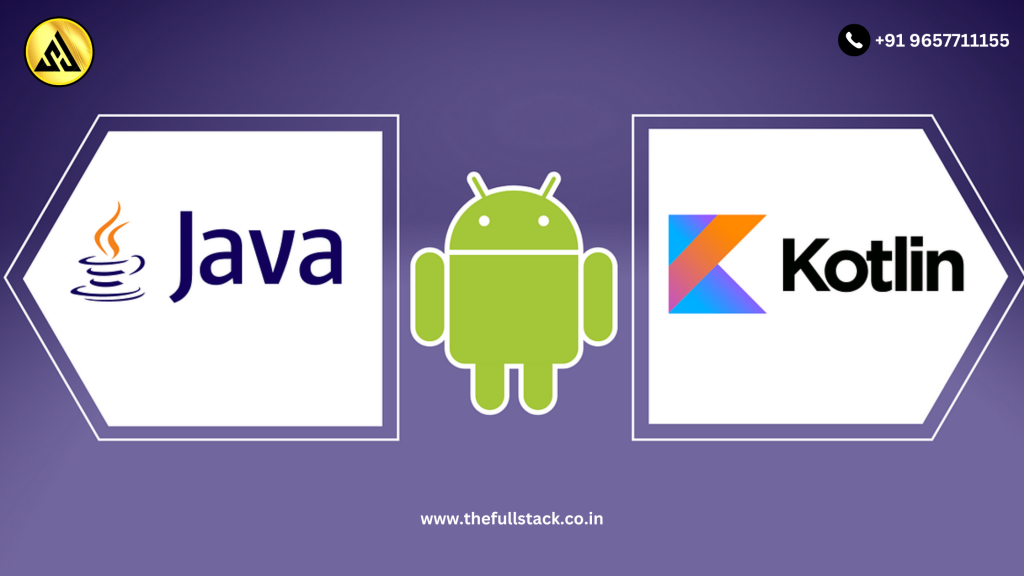One of the most important questions developers confront in the ever-changing field of backend development is whether to study Kotlin or Java. Both languages are strong and popular, but they each have special advantages in the field of backend programming. We’ll go over the contrasts, benefits, drawbacks, and practical uses in this blog so you can make an informed decision for your technological journey.
🚀 A Quick Introduction
Java is a seasoned language that has been utilized in enterprise-level applications for more than 20 years. In contrast, Kotlin is a contemporary language that combines strong features with simplicity. In 2017, Kotlin, created by JetBrains, was approved as an official language for Android development; however, it is also causing a stir in backend development.
🔍 Comparison: Java vs. Kotlin for Backend Development
| Feature/Aspect | Java | Kotlin |
| Age & Maturity | Over 25 years old; highly stable | Relatively new; rapidly gaining popularity |
| Syntax | Verbose and strict | Concise, expressive, and developer-friendly |
| Null Safety | Requires manual handling | Built-in null safety features |
| Learning Curve | Easier for beginners due to legacy docs | Easier for those with Java experience |
| Tooling Support | Excellent (Eclipse, IntelliJ, NetBeans) | Excellent (especially with IntelliJ IDEA) |
| Performance | High performance with JVM | Nearly identical JVM performance |
| Coroutines | Not built-in | First-class support (great for async tasks) |
| Community Support | Massive and mature | Growing fast, especially in mobile/backend |
💡 Why Choose Java for Backend Development?
- Enterprise Trust
Java powers big giants like Netflix, Amazon, and LinkedIn. It’s the go-to for large-scale enterprise systems. - A Wealthy Ecosystem
Java makes backend development scalable and reliable using frameworks like Hibernate, Spring, and Java EE.
- Big Talent Pool & Assistance
Because Java has one of the largest developer communities, there are a ton of learning resources available in the form of libraries, tutorials, and forums.
- Backward Compatibility
Java ensures long-term stability by maintaining compatibility across versions, which is crucial for big projects.
💥 Why Choose Kotlin for Backend Development?
- Modern Syntax = Fewer Bugs
Kotlin’s concise syntax reduces boilerplate code, making apps cleaner and easier to maintain. - Built-in Null Safety
NullPointerExceptions? Not in Kotlin! The language is designed to eliminate this common headache. - Coroutines for Asynchronous Code
Kotlin’s coroutines make async programming easy, which is a big win for backend systems that handle many requests. - 100% Interoperable with Java
You can use existing Java libraries in Kotlin projects, making migration or integration smooth and painless. - Perfect with Ktor
The Ktor framework, designed by JetBrains, is optimized for Kotlin and ideal for building microservices and RESTful APIs.
🤔 So, Which One Should You Learn?
It really depends on your goals:
- Choose Java if:
- You aim to work with large enterprises or legacy systems.
- You prefer structured, mature ecosystems.
- You want to build skills valued in big corporations.
- You aim to work with large enterprises or legacy systems.
- Select Kotlin if
- You adore modern, clean coding.
- You’re working on startups or fresh ventures.
- You want to use coroutines to rapidly create microservices.
- You desire an upgrade even though you already know Java.
📌 Final Thoughts
Kotlin and Java are both great options for backend development. Kotlin’s expressive syntax and integrated security measures could give you a productivity boost if you’re just starting out. Java’s richness and ecology will be helpful if you’re entering a traditional or corporate tech setting.
The finest aspect? You are not need to select only one. Java and Kotlin can coexist in the same codebase, allowing you to begin with Java and switch to Kotlin when you’re ready.
🧠 Pro Tip:
Use both languages to begin developing a basic REST API. Examine the code, error-handling, and testing simplicity; no blog can help you make a better choice than this practical experience!
You may be interested in this:
Java Methods: A Complete Guide with Advantages and Best Practices

